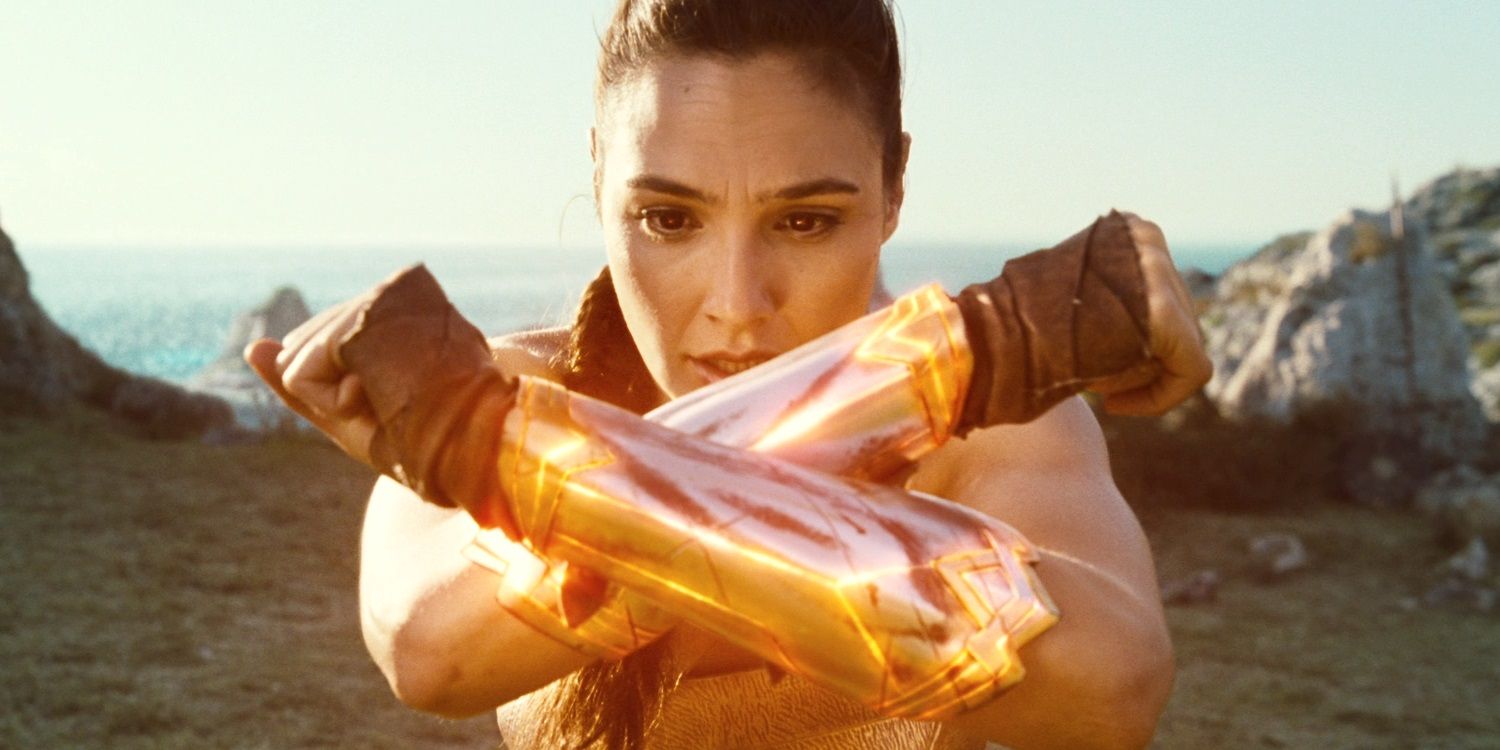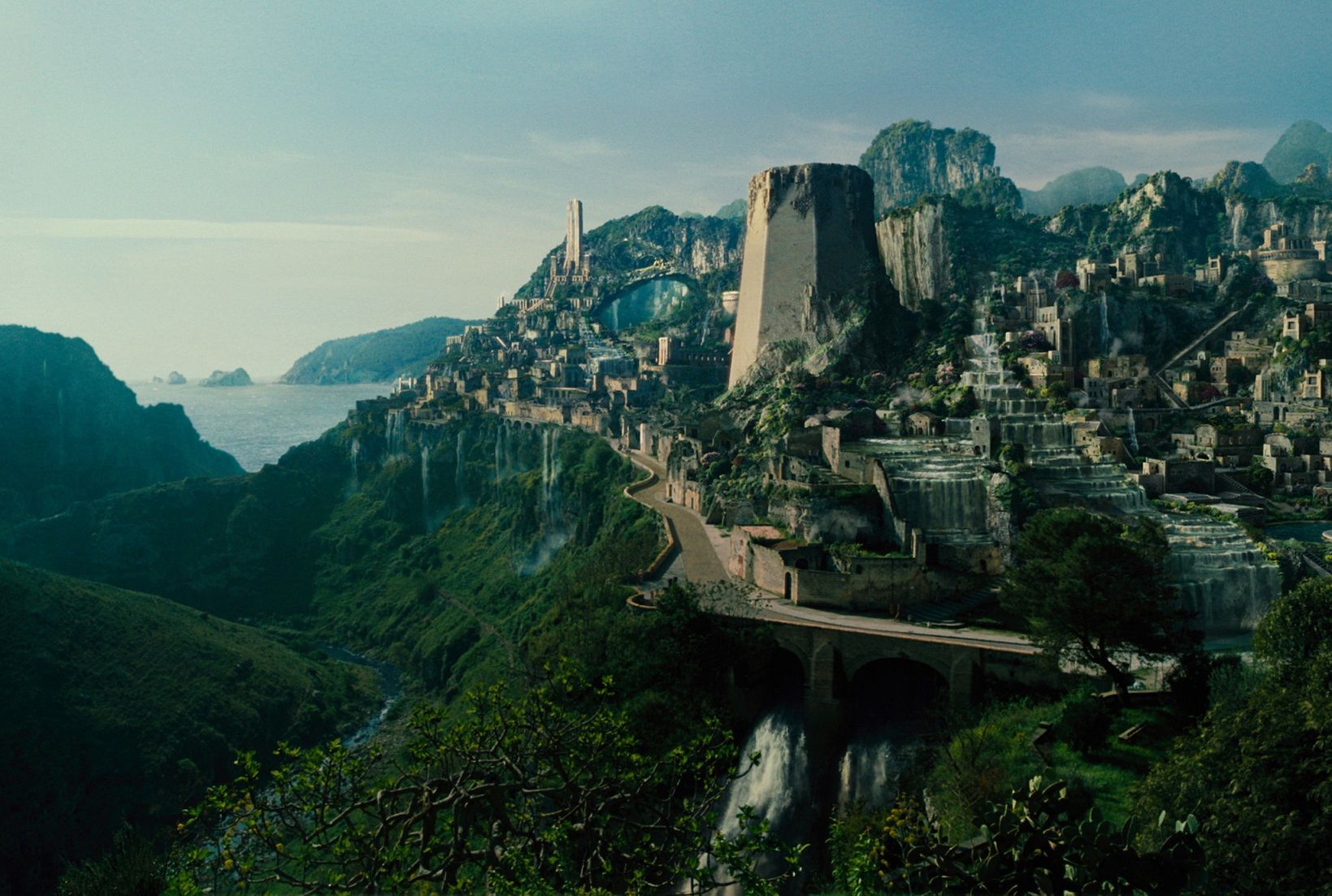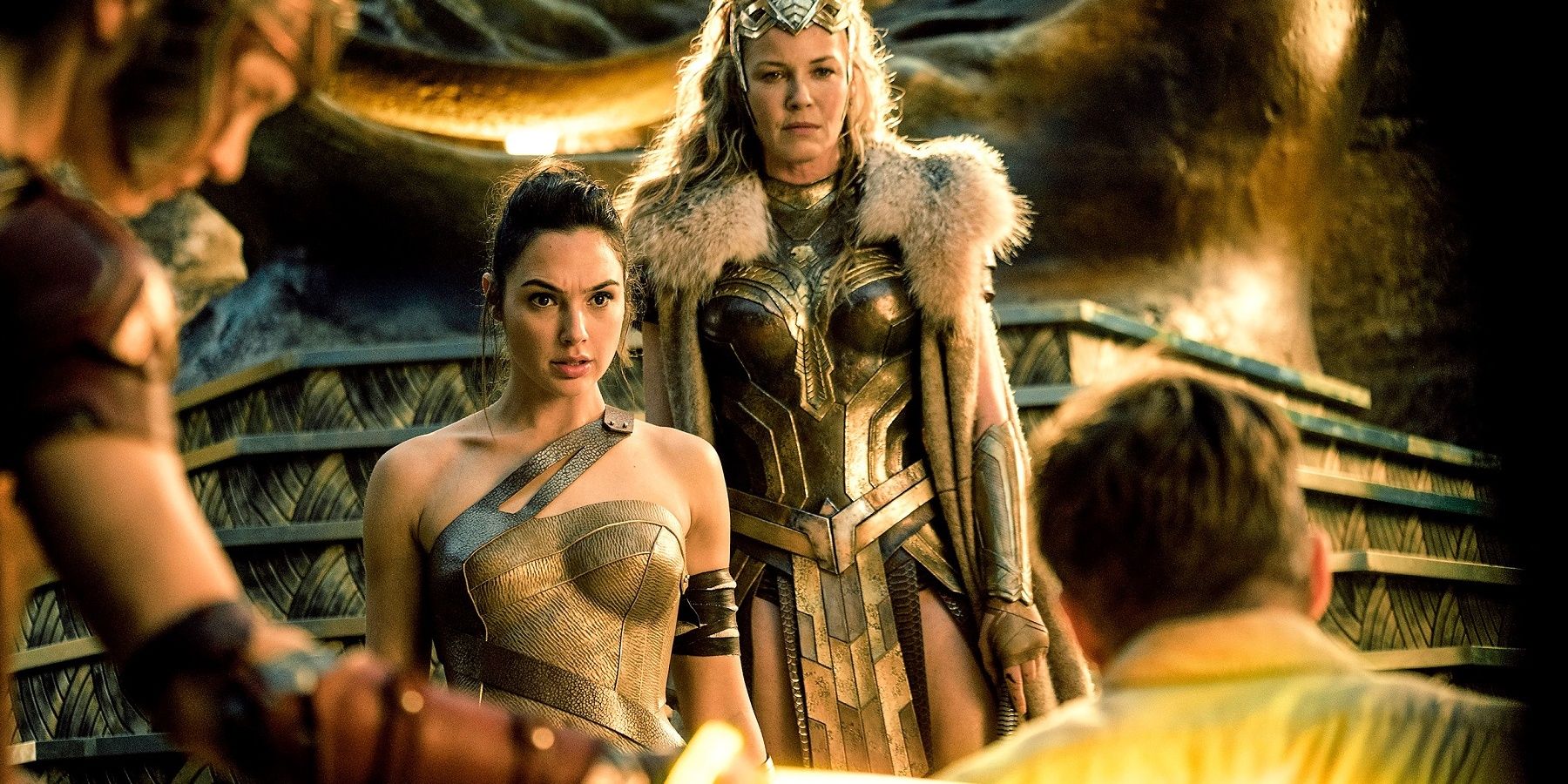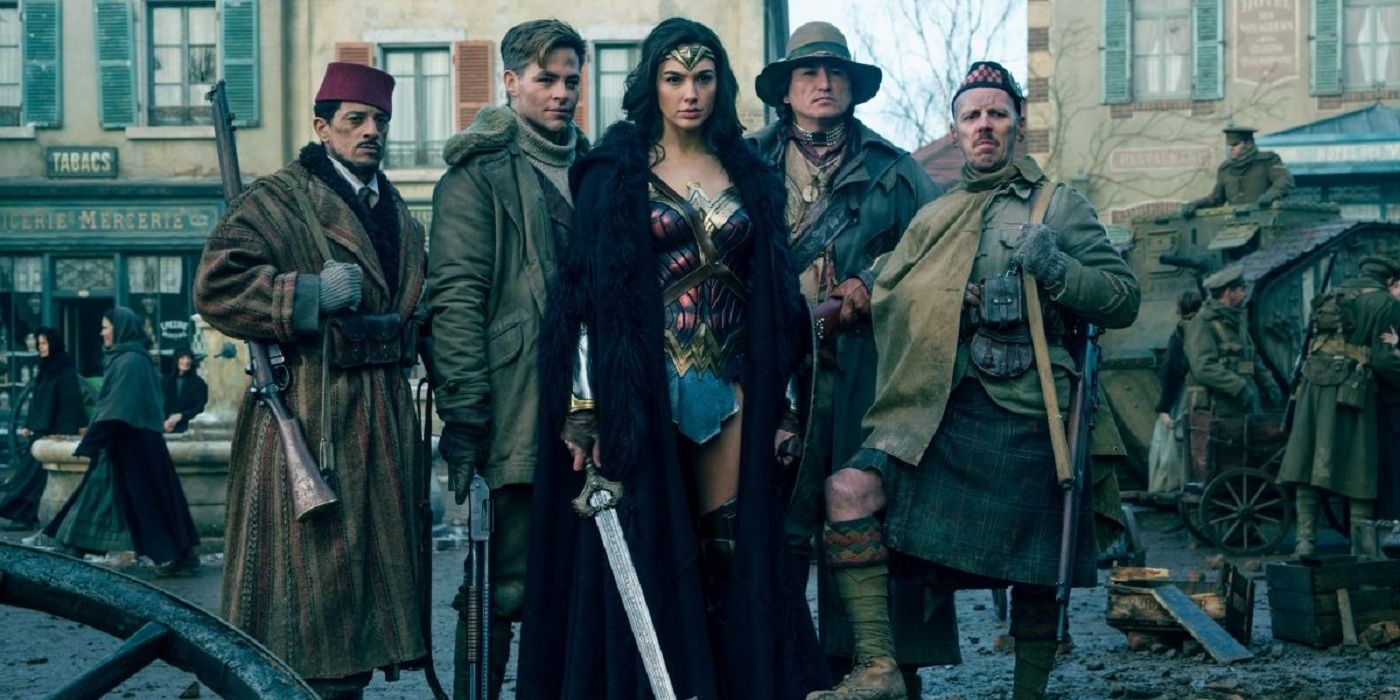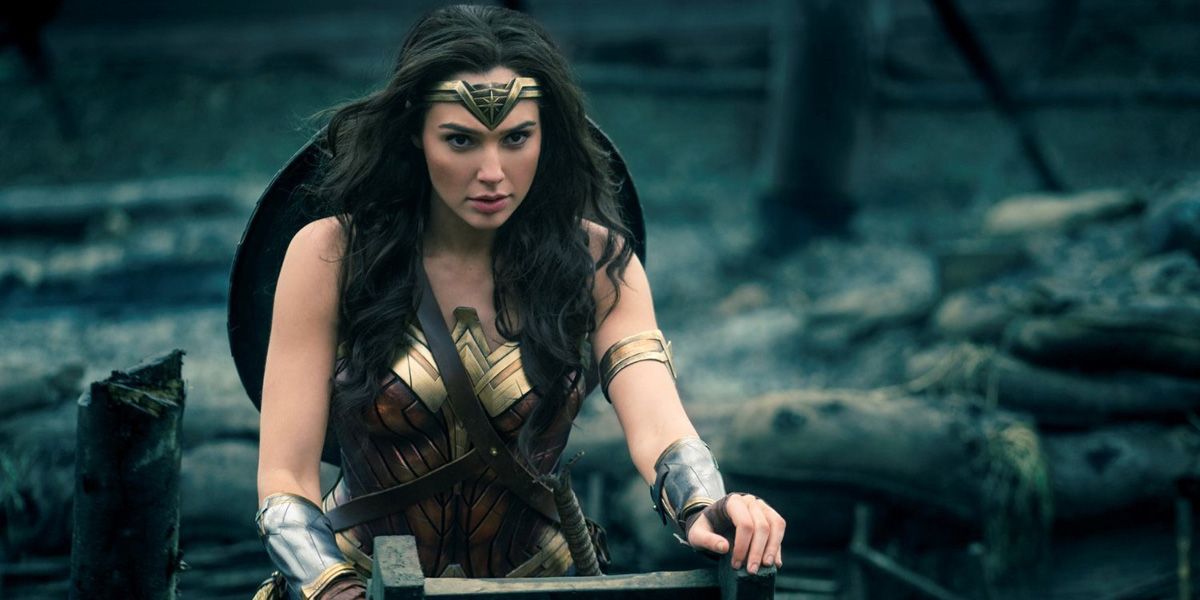Director Patty Jenkins' Wonder Woman has revitalized the DC Extended Universe on several levels. Not only is it a financial success, praise is being given to the film on a creative level as well, specifically its dynamic storytelling and the performance of the cast. But it's the evolution of the look and feel of the already established visual tone of Warner Bros.' DCEU where it's a true game-changer, using shifting visual tones to match the film's split narratives -- one representing the light and relative innocence of Themyscira, and the other indicative of the dark, gritty, war-torn world of mankind.
RELATED: Wonder Woman: What We Want From The Sequel(s)
Jenkins' visual aesthetic is bold, simultaneously based in and moving past the DCEU's signature look as laid down by Zack Snyder in 2013's Man of Steel, a style that carried through to Snyder's own Batman vs. Superman and David Ayer's Suicide Squad. Wonder Woman didn't depend on the bleak, colorless palettes that those films prides themselves on, a presentation fans have criticized, hinting that maybe Warner Bros. is listening to them. Instead, Jenkins focuses on the duality of Diana of Themyscira as she transitions from an innocent Amazon to the battle-ready Wonder Woman.
Under Cinematographer Matthew Jensen, the film started off with a sprawl of light and color rarely seen in the DCEU, painting Themyscira as a true tropical hideaway. The lush greens, gorgeous reds, vibrant, cloud-filled blue skies and water crafted a Paradise Island that felt truly taken from the comics. This visual atmosphere worked with Diana's adolescence, accentuating for the audience a sense of youth, naivety and innocence. It felt like the DCEU had tremendous heart and soul. Amid this self-discovery and growth, one thing that stood out was Diana's training; these daytime action sequences felt so much more vibrant than when Superman took on Faora and the rest of Zod's army MoS, a battle that was itself a rare foray into the light as most DCEU fights somehow take place at night.
RELATED: Wonder Woman 2: Patty Jenkins Already Knows Sequel’s Setting
As Diana makes her transition into womanhood, she discovers Steve Trevor in the water, a scene that rolls into the Amazons fighting the Germans in a thrilling battle, once more punctuating that Jenkins wanted to make an inspirational adventure. This was played up even more when we saw the Amazons in their armor, on horses, using bows and arrows, and then interrogating Steve -- confirming that we did indeed have an epic on our hands akin to The Lord of the Rings or Marvel's Thor franchise. And through it all, the action was clear, brightly-lit and easy to follow.
With the arrival in England comes a shift to a darker tone, though still not as extreme as Snyder's palette. The dulling of color here fit the movie's narrative, occurring as the story begins to embrace its period-piece setting, entrenched in World War I and exploring Europe. As Wonder Woman begins to make statements reflecting the world as we know it, we transition from a beautiful, pristine utopia to the real-world which mankind dirtied up with its lust for power, greed and control. When Diana derides London, it felt like a tongue-in-cheek jab at how we've failed the world we live in, and the bleak picture painted behind her only accentuates her point.
Wonder Woman's story strikes a great balance in terms of humor, lightheartedness and endearing romance, but the second half is definitely more of a war movie than anything else. Jenkins' darkened tone captured the grime of the war, as well as the pain and anguish which reverberated across Europe. As the movie winded down, it was clear that Jenkins was inevitably building to a high-octane showdown with Ares. The final battle, while necessary to the transformation of Diana into Wonder Woman, did feel like a Snyder-style finale, thus throwing us back a bit into the familiar DCEU visual template.
RELATED: Wonder Woman: How Do You Solve a Problem Like Steve Trevor?
That's fine, though, because as soon as the smoke clears, it's seems clear that the DCEU is poised to move past the days of old. Jenkins' approach to Wonder Woman gives fans critical of the DCEU's previously drab approach to superheroes hope that its sequel -- or other DCEU films -- may not utilize the same seemingly-mandatory dark palettes as Justice League seems to. The visual duality she has introduced to the DC Films oeuvre may well offer a template for the mystical realm planned for Shazam or the Justice League Dark movie. If nothing else, it shows that the studio ready to allow filmmakers to step outside Snyder's visual sandbox, to tell their own stories and place their own stamps on them.
In theaters now, Wonder Woman stars Gal Gadot as Diana, Chris Pine as Steve Trevor, Robin Wright as General Antiope, Danny Huston as General Erich Ludendorff, Connie Nielsen as Queen Hippolyta, Elena Anaya as Doctor Poison and Lucy Davis as Etta Candy.

